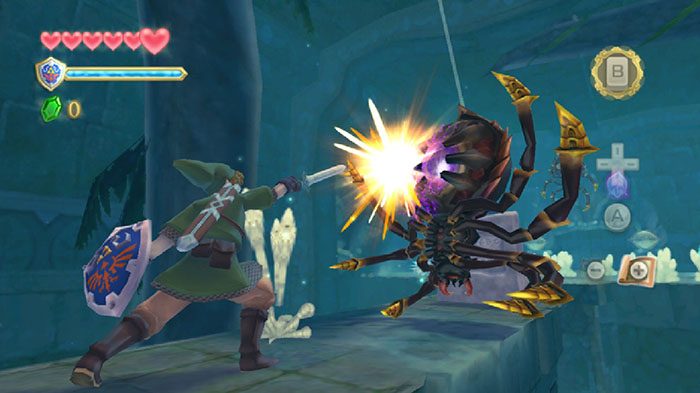
You’re probably counting down the days until March 3rd, 2017 for the release of Legend of Zelda: Breath of the Wild. With its sweeping scope, complete restructuring of its classic formula, and incredible level of freedom, Breath of the Wild is looking to be everything that fans have been wanting from a new Legend of Zelda game. Fans are excitedly following the news everyday as the seconds tick down to its simultaneous release on the Wii U and Switch.
Of course, this new focus on open world exploration and adventure is great, but what people are most excited about are the new dungeons that will be in the game. After all, while adventure has always been the heart of Zelda, dungeons are really the meat of the games. They’re the real test of your abilities; where you have to think through devious puzzles, make use of all the items you’ve been collecting throughout the game, and have your most climactic battles against giant bosses. You may be thinking about going back and looking at some of the older Legend of Zelda titles to relive some of your favorite moments from the franchise.
We thought we might help you get into the right mindset and give you a starting point by recommending what may be some of the finest dungeons in the franchise. We’re basing our criteria on the level of creativity on display, either visually, narratively, or in their design. That way, you have a good guide for what to keep an eye out for as you make your run through of all the different Zelda games!
10. Desert Palace from The Legend of Zelda: Link Between Worlds
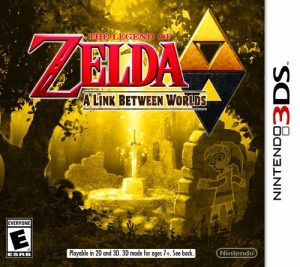
- System: 3DS
- Publisher: Nintendo
- Developer: Nintendo EAD
- Release Date: November 22, 2013
Kicking off this list is also a dungeon from the most recent game in the franchise. Every Zelda game needs a desert dungeon, but very few can claim to actually use the theme as a major aspect of the gameplay. Desert Palace, however, uses the sand as an essential mechanic as a means to progress. You’ll need the Sand Rod, which can shape the sand into pillars that you can use to traverse higher areas of the dungeon than you would ever be able to otherwise.
What’s really interesting about Desert Palace, however, is the set up. The game leads the player into believing the dungeon takes place in Lorule (this game’s alternate “dark world” that’s become a Zelda standard) to save one of the seven sages, as the game’s map actually indicates. However, the approach to the dungeon requires interplay in traveling between Hyrule and Lorule, with the eventual dungeon actually being in Hyrule; but once the player arrives at the end, they’re forced into Lorule to face Zaganaga, the boss guarding the imprisoned sage. It gives the dungeon a more natural feel, as if the dungeon is just another part of the world that you need to work through. It’s a unique take on the standard “minion guards a magic item in a mystical area” formula in Zelda dungeons.
9. Tower of the Gods from The Legend of Zelda: The Wind Waker

- System: GameCube, Wii U
- Publisher: Nintendo
- Developer: Nintendo EAD
- Release Date: March 24, 2003
Most of the time in Zelda games, you have some form of transportation to help speed you along the over world, whether it’s your trusty horse Epona, a train, giant bird, or in Wind Waker’s case, The King of Red Lions, a small boat. While in other games your mode of transportation remains separate from your dungeon adventures, Tower of the Gods actually allows you to bring along The King of Red Lions! You’ll actually need it to cross all the water along the bottom floor of the area, which helps make this tower feel distinct as a real tower that’s jutting from the sea rather than just a series of floors. Each section actually feels unique, giving you the sense of progression as you ascend the tower.
What’s also great about this dungeon is that it slyly eases you into one of the game’s central mechanics of having a partner required to travel through subsequent dungeons. Initially, it sets this up with the King of Red Lions, a character you already know and are used to traveling with and keeps it familiar by simply using him to make it through this bottom part. Then, later in the dungeon when you’re separated from your boat, the tower mixes it up a bit by having you lead around statues to put on switches. It’s a great dungeon that preps you for the second half of the game.
8. Temple of Droplets from The Legend of Zelda: The Minish Cap
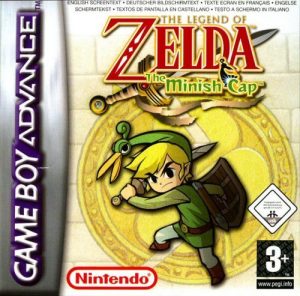
- System: Gameboy Advance, Wii U
- Publisher: Nintendo
- Developer: Capcom
- Release Date: January 10, 2005
Now we move onto a dungeon from a game by the only title on this list to not have been developed by one of Nintendo’s internal teams! Having a team that was largely separated from the main Zelda team must have given the franchise a chance to be developed with an outside perspective on what could and could not be done with the franchise, which led to the concept of splitting the world between “normal world” and “tiny world”, where Link is, shall we say, “fun-sized”!
This smaller scope and perspective culminates in the Temple of Droplets, the game’s finest dungeon. While other dungeons in Minish Cap give you the chance to alternate between Link’s normal and miniature-sized forms, Temple of Droplets is entirely based around Link being tiny. This actually doesn’t change the normal gameplay too much from just normal dungeon romping. So then why include it on the list?
It all comes down to how it alters the feel of the dungeon. A common trend in Zelda dungeons revolves around solving smaller puzzles to make it through different areas in the dungeon that guide how the player progresses; whether it’s to tear down a massive pillar in your way, climb up to the top of the dungeon where the boss is hiding, or what have you. In the Temple of Droplets though? It’s just to free a frozen Octorok (a staple enemy grunt of the franchise) that happened to have eaten the Water Element. It’s a relatively minor task that feels bigger than it actually is thanks to the scale! It perfectly exemplifies what Minish Cap is all about
7. Ancient Cistern from The Legend of Zelda: Skyward Sword
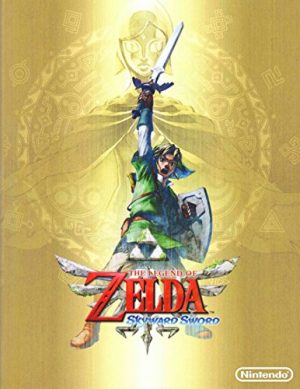
- System: Wii, Wii U
- Publisher: Nintendo
- Developer: Nintendo EAD
- Release Date: November 20, 2011
Chances are that one of the first Zelda games you’ll think to go back and play will be Skyward Sword. It is, after all, the most recent Zelda game with fully 3D gameplay, and will probably be the game that will have most influenced Breath of the Wild. It was pretty controversial at its release due to the overemphasis on motion controls and the questionable design choices of its overworld. However, Ancient Cistern makes a strong argument in Skyward Sword’s favor.
The Ancient Cistern could perhaps be considered as the standard bearer for Zelda dungeons. That’s not necessarily to say it’s the best, mind you. But it hits all the marks for what makes a Zelda dungeon great. Everything in the Ancient Cistern just flows together so well. The pacing for the puzzles is top-notch, with some creative set pieces thrown in, like having Bokoblins attempt to drag him off a rope to escape the underground section of the dungeon. The theming is deceptive, with a seemingly elegant appearance that belies the hellish landscape underneath. And it all ends with arguably one of the most fun boss battles in the franchise with Kokolos.
6. City in the Sky from The Legend of Zelda: Twilight Princess

- System: GameCube, Wii, Wii U
- Publisher: Nintendo
- Developer: Nintendo EAD
- Release Date: November 19, 2006
While desert, fire, and ice themed dungeons have been pretty par for the course for the franchise since the beginning, a new trend that has sprung up in modern Zelda games has been the requisite sky dungeon. And who can blame them? There’s a sense of grandeur and freedom that comes with the notion of being out in the open air, free from the confines of the ground. Yet there’s also a sense of terror, as one wrong step can spell the end for you.
No other sky-themed dungeon in the Zelda series has really captured that dichotomy with the same sense of style that City in the Sky did. There’s this air of mystery that surrounds every facet of the dungeon. Why is this the home of the Ooccoo’s? Did anyone else use to live here? Where did it come from? It’s an area that ends up creating more questions than answers, but you can’t think about that too much, as you’re too busy clawshotting from one pillar dangling over bare sky to the next! If you were to pick any Zelda dungeon as a showcase for the sheer spectacle they can bring, City in the Sky is easily the top contender.
5. Eagle Tower from The Legend of Zelda: Link’s Awakening

- System: Gameboy, Gameboy Color, 3DS
- Publisher: Nintendo
- Developer: Nintendo EAD
- Release Date: August 1993
Link’s Awakening is everyone’s favorite underdog of the franchise. It’s oft overshadowed by the bigger games in the franchise, like Link to the Past or Ocarina of Time, but you’ll rarely meet anyone who dislikes it. This is a shame, because it’s just as much of a full-fledged Zelda game as anything else you might find on this list in spite of the hardware it was originally released for. In fact, it even makes use of the original black and white screen for its setting, as the lack of color gives it this odd, otherworldly feel. Nothing feels quite right in this game.
Eagle Tower makes its place in this list for something a little more than an interesting theme though. Actually, Eagle Tower is perhaps the most straightforward in its presentation compared to some of the other dungeons in the game, making the least use of this almost dream-like quality to the game. However, it sets an incredibly important precedent in the series. It marks one of the very first times in the franchise where every puzzle and action is all building up to completing a single action. In this, it’s breaking all 4 pillars supporting the top of the tower by figuring out how to transport a giant iron ball with you and throwing it into each one. This sends the top floor crashing down, making the boss finally accessible. It’s somewhat underappreciated in how it would go on to affect the direction of the franchise, and helped define what truly makes Zelda dungeons great.
4. Death Mountain from The Legend of Zelda
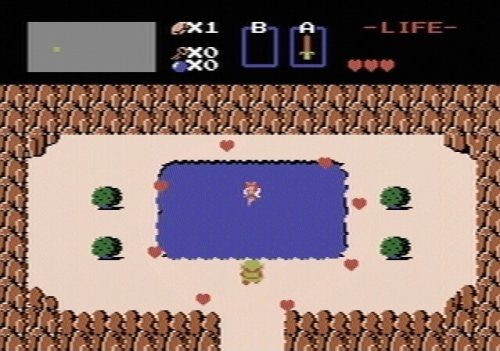
- System: NES, GameCube, Gameboy Advance, Wii, 3DS, Wii U
- Publisher: Nintendo
- Developer: Nintendo R&D 4
- Release Date: July 29, 1987
Whatever happened to difficulty in games? Zelda games have this particularly nasty habit of making their final dungeon feel more like a spectacle without a ton of meat to it. Maybe it’ll have something of a culmination of what you’ve learned about the game, but often they won’t push you too much because they really want you to make it to that final confrontation and have you feel like the hero the game has been building up. They feel more like victory laps than final challenges to conquer
But you know what? When we were kids, and we finally made it to Death Mountain, we took one look at that map and immediately understood one thing: the game was only just beginning. This area is of a dungeon and more of an endless endurance run, testing every single ability built up throughout the game, throwing wave after wave of the toughest enemies the game has to offer. Heck, it would even throw enemies at you so difficult and threatening they’d later become bosses in other games! Death Mountain was a real test, and only a select few would face it head-on and become true heroes.
3. Spirit Temple from The Legend of Zelda: Ocarina of Time
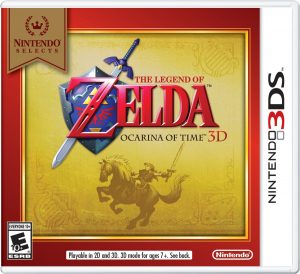
- System: N64, GameCube, Wii, Wii U
- Publisher: Nintendo
- Developer: Nintendo EAD
- Release Date: November 23, 1998
Ocarina of Time is possibly the most fondly remembered game of all time, let alone just from the Zelda franchise. It set so many standards that we take for granted in modern gaming, like setting enemies as targets and context-sensitive actions, that its sheer influence is hard to separate from the hype. But Ocarina of Time is still a great game in its own right, using the time-travel aspect of the game to set up some interesting narrative threads. Link meets and influences different people as a child, only to discover in the future how their lives have been affected by his absence.
Now, a lesser game would have just dropped all the different mechanics you had learned as a child, or incorporated all of them into Link’s adult persona and kept Link as an adult all throughout the game. Ocarina of Time, however, goes the extra mile with the Spirit Dungeon and forces you to alternate between these two forms. It gives this feeling that the entire game has come full circle, and feeds into the narrative the game sets up where Link has to master time in order to beat Ganondorf, and that includes going forward and backwards. It effectively creates two distinctive dungeons in one, and gives the game the sense that it has come full circle.
2. Skull Woods from The Legend of Zelda: A Link to the Past

- System: SNES, Gameboy Advance, Wii, Wii U, New 3DS
- Publisher: Nintendo
- Developer: Nintendo
- Release Date: April 13, 1992
A seemingly odd choice from what is often mentioned in the same breath as Ocarina of Time as one of the all-time classics of the series. But then, maybe it only seems like an odd choice due to the sheer quality of all the dungeons in the game! After all, Link to the Past was a gigantic leap forward for the franchise coming off of the NES days, with its absolutely gigantic world and seemingly endless quests. But, even more noteworthy than that is that, since Link to the Past was such an early entry in the series, it gave Nintendo room to experiment with what was possible with every single dungeon.
No other dungeon highlights the sheer amount of creativity on display in Link to the Past than Skull Woods. See, Zelda games have this tendency to fall into a formula of travelling the overworld, finding a dungeon, solving all the puzzles inside, and defeating the boss at the end. However, Skull Woods challenges this style of progression, as beating the dungeon actually requires you to explore the overworld to find its many different entrances to find the Flare Rod before the final stretch to the boss. It blurs the line between what we consider part of the overworld and part of a dungeon.
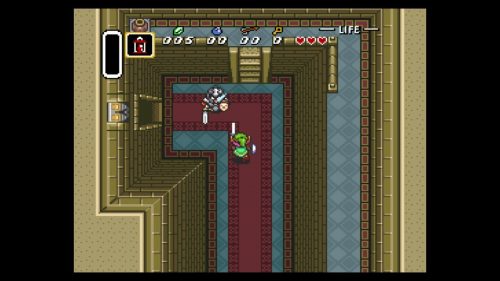
1. Stone Tower from The Legend of Zelda: Majora’s Mask

- System: N64, GameCube, Wii, 3DS
- Publisher: Nintendo
- Developer: Nintendo EAD
- Release Date: October 26, 2000
This was a tough call. Truth be told, everything that’s been listed here could be convincingly argued in favor of the number 1 spot. But in the end, Stone Tower is special, partially because Majora’s Mask is a special game in its own right. There’s a surrealist horror aspect to the imagery and tone in Majora’s Mask. Everything feels just slightly off, from the familiar characters from Ocarina of Time becoming completely different people to, well, the determined look on the face of the moon that’s crashing down on the planet. But it’s almost too restrained, like the game is trying to keep itself from fully going mad.
That all comes to a head in Stone Tower. It is, perhaps, the perfect Zelda dungeon. It constantly tests the limits of your mental capabilities and forces you to look at obstacles in new ways, like using stray hands that normally grab you and toss you out of the water out of annoyance and using them to actually get you up on platforms or weirdly spawning upside down chests you can’t open to hookshot across a gap. Stone Tower forces you to think outside of the box almost every step of the way, and then goes into full surrealist insanity when part of the progression is actually flipping the entire tower upside down. It’s a dungeon where every single piece of architecture has a purpose beyond just adding atmosphere, which is why it gets the nod for the best dungeon in the entire franchise.
Final Thoughts
Naturally, this isn’t meant to be the final word on dungeons in The Legend of Zelda franchise. There are so many dungeons in the series, even from games we didn’t cover, that it would be impossible to cover them all! So please, if we missed any in this article, let us know in the comments below!
Recommended Post
Top 10 Strongest Zelda Villains
Recommended Post
Top 10 Items in Zelda
Recommended Post

